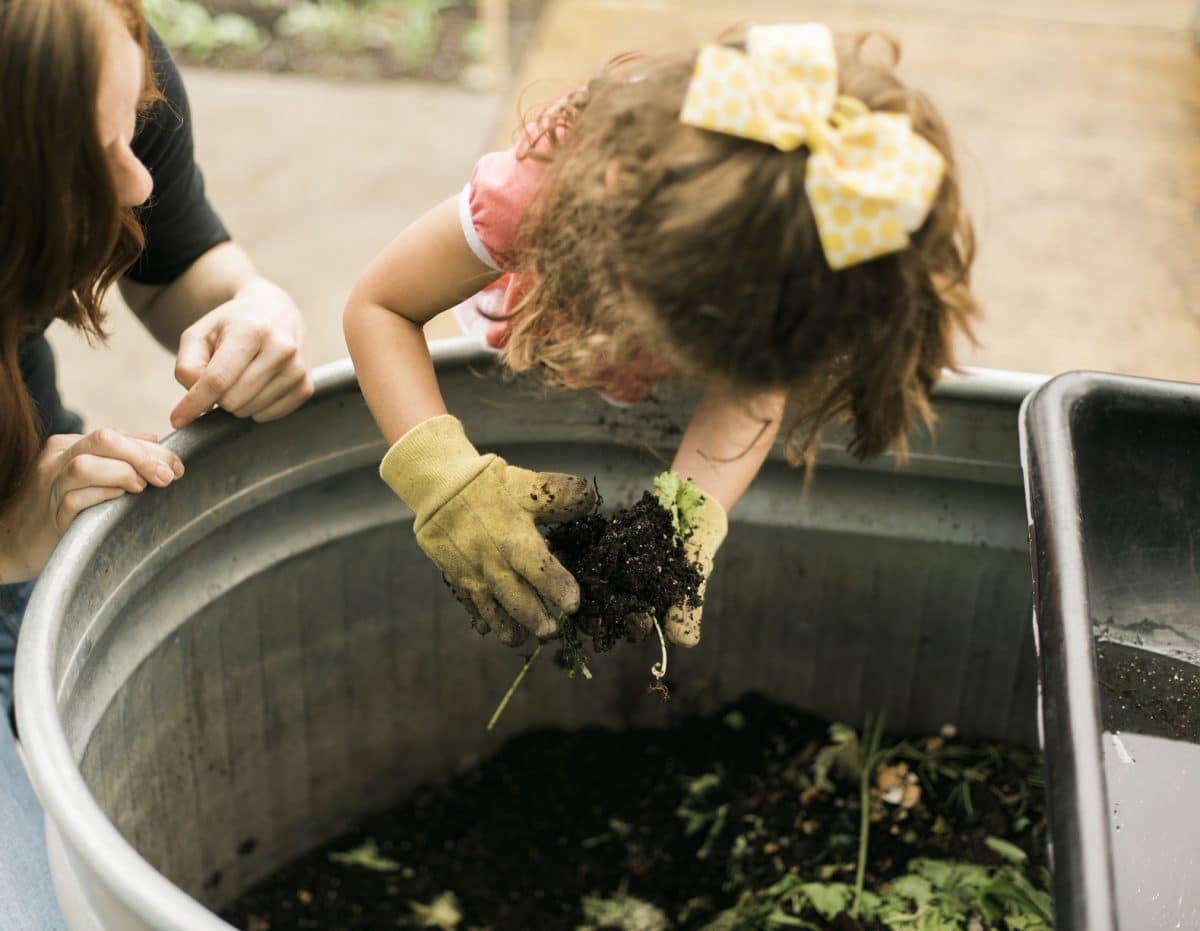All Children are Scientists; The World is their Laboratory

This is the third in a series of blogs highlighting “Growing with Nature: Supporting Whole-Child Learning in Outdoor Classrooms.” Contributors include Dimensions Educational Research Foundation executive director Nancy Rosenow and members of the Nature Explore education team.
Over the past few decades, outdoor settings for children have become increasingly sanitized spaces devoid of nature’s “loose parts” that invite hands-on discovery that supports science learning. As children have begun spending more time in front of screens, their understanding of the world around them is coming more from media than their own experiences; it’s not uncommon for today’s children to know more about the rainforest than about the plant and animal life in their own backyard.
Nature-based outdoor spaces in early childhood programs and elementary schools—and in places where families spend time—are once again giving children access to daily explorations in nature. These experiences provide a sensory basis for developing meaningful and foundational science understandings. In a nature classroom, children are observing, investigating, devising experiments, problem solving and learning scientific concepts long before they master scientific vocabulary.
Dimensions Foundation researchers have codified key aspects of nature-based science learning into five areas: Cause and Effect, Close Observation, Cycles and Seasons, Classification and Environmental Awareness. Here are a few examples of these concepts unfolding in Nature Explore Classrooms.
Cause and Effect
As young children begin to experience the ability to create reactions to their own actions, they develop an understanding of cause and effect. Nature provides many free “tools” to help them on this learning journey
“Grayson, aged 2 ½, was in the Nature Explore Classroom under a tree. He was picking up different sticks and breaking them. He seemed to be listening to the sound each stick made as he snapped it in two. After a particularly loud sound, he looked up at me and said, ‘Watch me.’ I asked him what sound it made. He said, ‘Loud.’ He continued to break sticks into various lengths one after another.”
–Katie Dietz, Dimensions Early Education Programs, Lincoln, NE
Close Observation
Dimensions Foundation research consistently demonstrates that close observation skills are strengthened when children spend time in Nature Explore Classrooms. Over time, children who are able to explore the natural world regularly become comfortable seeking new information. As they ask questions, actively explore, compare what they think they know with what they are observing, and then reflect on new assumptions, they become participants in the process of developing an increasingly complex understanding of science.
“Preschooler Lonnie closely observed a grasshopper in the greenhouse. No photograph or story could provide him with the same information he gathered in this hands-on way.”
–Jenny Leeper Miller, Ruth Staples Child Development Laboratory, Lincoln, NE
Cycles and Seasons
“As children observe, reflect, record and share nature’s patterns and rhythms, they are participating in a process that promotes scientific and ecological awareness, problem solving and creativity.” –From Discovering Science in Nature by D.M. Hensley
“Curiosity was contagious as my students, ages six to eight, watched larvae grow into caterpillars. Once the caterpillars were hanging inside their chrysalises, the children waited with anticipation for them to emerge as butterflies…. The awe on their faces was priceless as they witnessed the first Painted Lady slowly climbing out of its chrysalis. The children spent a few days observing the butterflies in our indoor garden. They learned to describe the life cycle of a butterfly and to identify its parts…. Finally the big day arrived. It was time to release our butterflies outside in our Nature Explore Classroom. With mixed emotions, we headed to our gathering area. But as each butterfly soared into the air, the children clapped and shouted with joy!”
–Jean Luchini, Beard School, Chicago, IL
For more stories of science exploration from Nature Explore classrooms around the country—as well as insights designed to inspire educators and families—“Growing with Nature” is available here.

